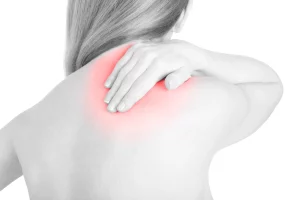In the realm of tech and innovation, nerve impingement holistic care poses a challenge for enthusiasts seeking holistic solutions. As tech buffs push limits, holistic care becomes vital. Exploring how holistic approaches align with tech lifestyles unveils proactive solutions. This synergy hints at a future where well-being and tech pursuits unite seamlessly.
Key Takeaways
- Identifying the specific cause of nerve impingement is crucial for targeted treatment plans
- Holistic approaches like acupuncture, yoga, and stress management can help alleviate symptoms and potentially address the root cause
- Lifestyle changes such as maintaining a healthy weight, proper posture, and stress management techniques are essential for nerve impingement relief
- Tech-friendly solutions such as ergonomic workstations and digital detox strategies can help alleviate nerve impingement symptoms, especially for those in the tech community
Understanding Nerve Impingement
Understanding Nerve Impingement involves a comprehensive grasp of the anatomical structures and physiological processes that contribute to nerve compression and associated symptoms. Nerve impingement occurs when a nerve is compressed or irritated, leading to pain, weakness, numbness, or tingling sensations along the affected nerve pathway. The most common causes of nerve impingement include herniated discs, bone spurs, soft tissue inflammation, or abnormal bone growth that puts pressure on the nerve.
In the case of herniated discs, the gel-like center of the disc can bulge out and press on nearby nerves, causing pain and discomfort. Bone spurs, which are bony growths that develop on the edges of bones, can also encroach on nerve space and lead to impingement. Additionally, soft tissue inflammation due to injuries or overuse can result in swelling that compresses nerves. Understanding the specific cause of nerve impingement is crucial for developing targeted treatment plans that alleviate symptoms and restore normal nerve function.
Holistic Approaches for Nerve Impingement
Exploring holistic approaches for addressing nerve impingement involves integrating alternative therapies and lifestyle modifications to complement conventional medical treatments. This comprehensive approach aims to alleviate symptoms, improve overall well-being, and potentially address the root cause of the issue.
Here are three key holistic strategies that enthusiasts can consider:
- Acupuncture: Acupuncture is a traditional Chinese medicine practice that involves inserting thin needles into specific points on the body to help restore the flow of energy. This technique has been found to be beneficial in relieving pain and reducing inflammation associated with nerve impingement.
- Yoga and Stretching: Engaging in yoga and regular stretching exercises can help improve flexibility, reduce muscle tension, and enhance posture. These activities can alleviate pressure on the nerves and promote better circulation, which may aid in managing nerve impingement symptoms.
- Mindfulness and Stress Management: Practicing mindfulness techniques, such as meditation and deep breathing exercises, can help individuals manage stress levels. High-stress levels can exacerbate nerve impingement symptoms, so learning to relax and unwind can play a significant role in holistic care for nerve impingement.
Lifestyle Changes to Alleviate Nerve Impingement
To effectively manage nerve impingement, implementing targeted lifestyle changes is pivotal in alleviating symptoms and promoting overall well-being. Lifestyle modifications play a significant role in reducing the impact of nerve impingement on daily life. Maintaining a healthy weight through proper diet and regular exercise can help alleviate pressure on the affected nerves. Physical activities such as yoga, swimming, or walking can improve flexibility, strengthen muscles, and enhance overall well-being, which can contribute to reducing symptoms associated with nerve impingement.
Additionally, practicing good posture techniques while sitting, standing, or sleeping can help prevent unnecessary strain on the nerves. Ergonomic adjustments in workspaces and daily environments can also aid in reducing nerve compression. Stress management techniques such as mindfulness meditation, deep breathing exercises, or engaging in hobbies can lower stress levels, which in turn may alleviate nerve impingement symptoms.
Incorporating these lifestyle changes can complement holistic treatments for nerve impingement and empower individuals to take control of their well-being.
Tech-Friendly Solutions for Nerve Impingement
Tech enthusiasts seeking relief from nerve impingement can explore innovative solutions tailored to their digital lifestyles. When it comes to addressing nerve impingement issues in the tech community, specialized approaches are essential. Here are three tech-friendly solutions designed to alleviate nerve impingement symptoms and promote overall well-being:
- Ergonomic Workstations: Investing in ergonomic chairs, standing desks, and wrist supports can help tech enthusiasts maintain proper posture and reduce the strain on their nerves while working long hours on computers or devices.
- Voice-Activated Technology: Embracing voice-activated technology can decrease the need for repetitive typing or mouse usage, minimizing the risk of nerve compression and strain on the hands and wrists.
- Digital Detox Strategies: Implementing regular breaks from screens, incorporating mindfulness practices, and engaging in physical activities can help tech enthusiasts reduce nerve impingement symptoms exacerbated by prolonged digital device usage.
Empowering Enthusiasts Through Holistic Care
After outlining tech-friendly solutions for nerve impingement, the focus now shifts to empowering enthusiasts through a holistic approach that encompasses physical, mental, and emotional well-being. Nerve impingement can significantly impact enthusiasts’ daily lives, affecting their ability to engage in activities they are passionate about. By adopting a holistic care approach, enthusiasts can address not only the physical symptoms but also the mental and emotional aspects associated with nerve impingement.

Physical well-being plays a crucial role in the holistic care of nerve impingement. Enthusiasts can benefit from targeted exercises, physical therapy, and ergonomic adjustments to alleviate pain and improve mobility. Additionally, maintaining a healthy lifestyle through proper nutrition and adequate rest can support the body’s healing process.
Furthermore, addressing the mental and emotional components of nerve impingement is essential for enthusiasts’ overall well-being. Techniques such as mindfulness, meditation, and stress management can help individuals cope with the challenges posed by nerve impingement and enhance their mental resilience.
Frequently Asked Questions
What Are Some Common Misconceptions About Nerve Impingement Holistic Care?
Common misconceptions about nerve impingement holistic care include beliefs that it’s solely about physical therapy, ignoring mental health aspects. True holistic care integrates mind-body techniques, nutrition, and lifestyle adjustments, recognizing the interconnectedness of physical and mental well-being.
How Can Stress Contribute to Nerve Impingement and What Holistic Techniques Can Help Manage Stress?
Stress can exacerbate nerve impingement by increasing muscle tension and inflammation. Holistic techniques like mindfulness, yoga, and acupuncture can help manage stress levels, promoting relaxation and reducing physical manifestations of stress on the body.
Are There Any Specific Exercises or Stretches That Can Be Beneficial for Relieving Nerve Impingement Symptoms?
Specific exercises and stretches tailored to relieve nerve impingement symptoms can include gentle yoga poses like child’s pose, cat-cow stretch, and nerve flossing exercises. These movements can help alleviate pressure on nerves and promote flexibility and blood flow.
Can Diet and Nutrition Play a Role in Managing Nerve Impingement? if So, What Dietary Changes Are Recommended?
Diet and nutrition can indeed influence nerve impingement. Consuming anti-inflammatory foods like fatty fish, leafy greens, and berries can help reduce inflammation. Avoiding processed foods and excess sugar is recommended. Adequate hydration and balanced meals play a crucial role.
Are There Any Alternative Therapies or Treatments That Can Complement Holistic Care for Nerve Impingement?
Alternative therapies like acupuncture, chiropractic care, and physical therapy can complement holistic care for nerve impingement. These treatments focus on reducing pain, improving mobility, and enhancing overall well-being, offering a comprehensive approach to managing this condition effectively.
Conclusion
In conclusion, the integration of holistic approaches and lifestyle modifications offers a comprehensive solution for nerve impingement in technology enthusiasts. By prioritizing overall well-being and utilizing tech-friendly solutions, individuals can proactively manage and alleviate nerve impingement issues.
Empowering enthusiasts through holistic care fosters a deeper understanding of the intersection between technology and health, ultimately enhancing their well-being and optimizing their technological pursuits. Embracing a proactive and holistic mindset towards nerve impingement is crucial for sustainable well-being in the tech community.
You May Also Like:





